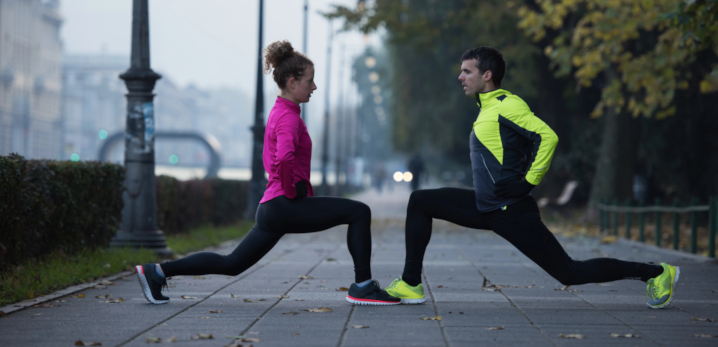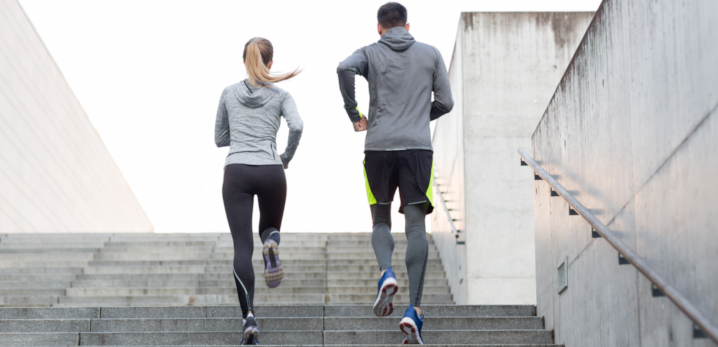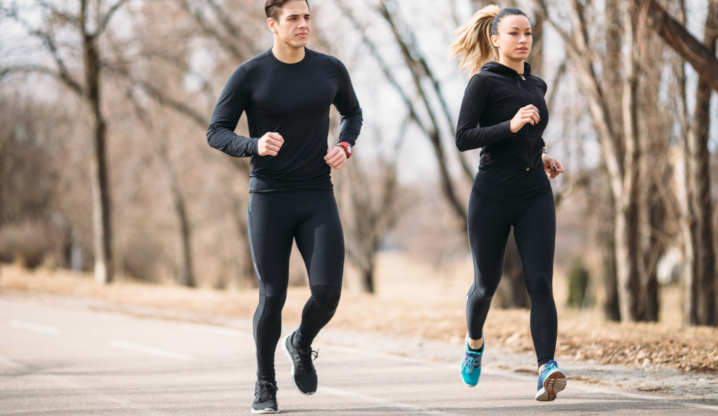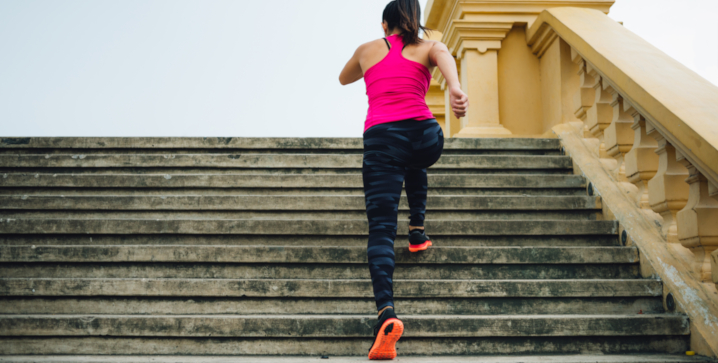Compression garments have become a staple in the world of elite athletics, you’d be hard-pressed to spot a professional competitor without their go-to, second-skin compression gear. Sure, it highlights those hard-earned muscles and gives off superhero vibes, but there’s much more to it than aesthetics. Compression clothing is designed to support performance and enhance mobility, making athletes feel lighter, more agile, and more in control.
But here’s the real question: Do you need compression wear even if your workout is light to moderate, short in duration, or not Olympic-level intense? The answer is a resounding yes, and it might surprise you just how versatile compression clothing can be.

Beyond workouts, compression gear is also ideal for everyday life, whether you’re on your feet all day at work, traveling long distances, or recovering from physical activity. It helps improve circulation, reduces muscle fatigue, and even assists in managing temperature, preventing chafing, and promoting better movement patterns. And in medical contexts, it’s often recommended for those with poor circulation, swelling, or a desire to prevent injury.
What’s more, research continues to back the benefits of compression clothing, not just during your workouts, but afterward as well. From reducing soreness to speeding up recovery, it’s one of the simplest yet most effective upgrades you can make to your fitness and wellness routine. So, whether you’re a weekend warrior, a 9-to-5 commuter, or a seasoned athlete, compression clothing isn’t just for the elite; it’s for everyone who wants to move better and feel better.
Table of Contents
- 1. Reduced Exercise Induced Muscle Damage (EIMD)
- 2. Accelerated Recovery Processes
- 3. Removes Lactic Acid Faster
- 4. Increased Strength and Power
- 5. Improved Endurance
- 6. Increased Muscle Oxygenation
- 7. Improved Body Temperature Control
- 8. Increased Venous Return
- 9. Reduced In-flight Ankle Oedema
- 10. Stabilizing Joints

The Top 10 Benefits of Compression Clothing
1. Reduced Exercise Induced Muscle Damage (EIMD)
Scientific evidence continues to support the benefits of compression garments for recovery. A study conducted by the Medical Research Institute in Sydney, Australia, used magnetic resonance imaging (MRI) to observe muscle changes post-exercise. Remarkably, the research showed a significant improvement in muscle pH, an indicator of recovery, after just one hour of wearing compression garments following a controlled muscle injury. The full observation period lasted 48 hours, highlighting just how quickly compression wear can begin to aid the recovery process.
Additionally, a thesis from the University of Sydney examined 24 rugby players and found that those who wore compression garments experienced a notable reduction in muscle swelling compared to those who didn’t. The difference in leg volume underscored the effectiveness of compression gear in managing post-exercise inflammation.
2. Accelerated Recovery Processes
A 2006 study published in the Journal of Sports Science and Medicine revealed compelling evidence on the benefits of compression garments during recovery from eccentric exercise. Using magnetic resonance imaging (MRI), researchers tracked muscle changes in 11 participants and found a significant improvement in key enzymes responsible for muscle membrane repair, after just one hour of wearing compression garments.
Even more impressively, the same study examined post-match recovery in rugby players at intervals of 0, 36, and 84 hours. The results clearly demonstrated that compression garments played an effective role in reducing muscle damage and accelerating recovery over time.
These findings highlight the power of compression wear not just for comfort, but as a scientifically supported tool to speed up muscle repair and enhance recovery, making it a smart addition to any athlete’s routine, whether you’re a pro on the field or just trying to bounce back after leg day.

3. Removes Lactic Acid Faster
According to a thesis from Australian Catholic University, elite netball players who wore compression garments during simulated game trials experienced a remarkable benefit, no lactate accumulation during high-speed play. This means their muscles stayed fresher for longer, even under intense physical demands.
Further supporting this, another study found that compression garments helped lower heart rate and reduce lactic acid build-up in athletes during high-intensity treadmill workouts. In both cases, the evidence is clear: compression wear doesn’t just make you feel supported; it actively enhances performance and endurance by improving circulation, reducing fatigue, and helping your body work more efficiently under pressure. If you’re looking to push harder and recover faster, compression gear could be a game-changer.
4. Increased Strength and Power
A study examining the effects of compression garments on ballistic strength in elite rugby players revealed impressive results: players wearing compression gear consistently threw a medicine ball farther than those without it. This suggests that compression garments can enhance explosive strength and power output, key advantages in both competitive sports and high-performance training.
In addition, an independent study on distance running biomechanics involving six participants found that wearing compression garments did not restrict running stride, a common concern, but instead improved propulsion, allowing runners to move more efficiently. Together, these findings reinforce that compression wear isn’t just about recovery; it can also boost strength, power, and performance, all without limiting your natural movement. Whether you’re sprinting, lifting, or covering long distances, compression gear can help you do it better.

5. Improved Endurance
According to a thesis from Australian Catholic University, elite netball players who wore compression garments during simulated game trials experienced noticeable performance improvements, specifically, spending more time at higher intensities without fatigue setting in. Even more impressively, the study reported no lactate accumulation during fast-paced play, meaning the athletes maintained peak performance longer without the usual muscle burn or energy crash.
These results highlight how compression gear can do more than just support recovery; it can actively enhance endurance, delay fatigue, and help athletes perform at their best when the game demands it most.
6. Increased Muscle Oxygenation
An independent study on 12 high-performance cyclists revealed compelling results: those wearing compression garments experienced dramatic improvements in muscle oxygenation, not only during peak exertion but also throughout recovery after intense exercise. This means their muscles received more oxygen when it mattered most, enhancing performance and accelerating recovery.
These findings underscore the powerful physiological benefits of compression gear, not just for support, but for helping your body work smarter under pressure and bounce back faster after. Whether you’re cycling, running, or pushing through high-intensity workouts, compression garments can give you a measurable edge.

7. Improved Body Temperature Control
A thermographic survey conducted on two elite football players revealed striking results. Surface temperatures in the working muscles differed by up to 5 degrees when wearing compression garments. This indicates enhanced temperature regulation, helping muscles stay warm and efficient during activity.
Further supporting this, a detailed study from the Waikato Institute of Technology in Hamilton, New Zealand, found that athletes wearing compression garments experienced improvements in heart rate, perceived core body temperature, and reduced heat stress during physical exertion. Together, these findings highlight the impressive thermoregulatory benefits of compression wear, keeping your body cooler, more comfortable, and better equipped to perform under pressure.
8. Increased Venous Return
In a medical context, compression garments offer vital support for individuals with poor circulation. By gently applying pressure to the limbs, these garments help promote healthy blood flow and significantly reduce the risk of deep vein thrombosis (DVT), a potentially serious condition where blood clots form, typically in the legs. DVT can cause pain, swelling, and redness, and in severe cases, may lead to life-threatening complications if left untreated. Wearing compression garments is a simple yet highly effective way to enhance circulation, reduce symptoms, and support overall vascular health, especially during long periods of sitting, standing, or travel.

9. Reduced In-flight Ankle Oedema
A 2008 study published in the Medical Journal of Australia examined 50 airline passengers on flights lasting over five hours and revealed compelling evidence in favor of compression garments. Passengers who did not wear compression garments experienced significantly greater ankle swelling, a key symptom of Economy Class Syndrome, compared to those who did. They also reported more pain and discomfort during the flight.
In contrast, those who wore compression garments not only had smaller ankle circumferences but also reported feeling more energized, alert, and focused during their journey. Their legs felt significantly better post-flight, and they even enjoyed a better night’s sleep afterward. These findings highlight how compression wear can dramatically improve comfort, reduce swelling, and promote better overall well-being during long periods of immobility, making it a smart travel essential, not just for athletes, but for anyone hopping on a long-haul flight.
10. Stabilizing Joints
An independent study examining the effects of graduated compression garments on distance running biomechanics revealed impressive findings. Six participants wore long compression tights during 30 repeated running sessions, and the results showed no restriction in knee movement or stride length, a common concern among runners. More importantly, the study found a notable improvement in propulsion from the hip, indicating enhanced running efficiency and power.
These findings suggest that compression garments not only allow for full, natural movement but can actually boost performance by supporting key muscle groups. For runners looking to maintain form, increase efficiency, and get more power from every stride, high-quality compression tights can offer a real competitive edge.
Final Thoughts on Benefits of Compression Clothing
Now that you’ve seen the powerful benefits of compression clothing, it’s important to understand what each piece can do and how it supports your body. For runners, high-quality compression gear is more than just a tight fit; it’s performance-enhancing, recovery-boosting, and built to go the distance. The truth is, you can expect good compression clothing to last just as long as your best running shoes, whether you’re pounding the pavement, hitting the trails, grinding on the treadmill, or fine-tuning your form with cross-training.
But what about price? Is it really worth choosing the more expensive option over a budget-friendly one? The answer is yes, but only when the brand backs up its price tag with science. Reputable compression brands invest in research, innovation, and independent testing to validate the medical and performance benefits of their products. If a company has poured time and resources into developing compression gear that actually works, you’re not just paying for a logo; you’re investing in proven support for your muscles, circulation, and recovery.
(This content was created with the help of AI.)
You may also like:
